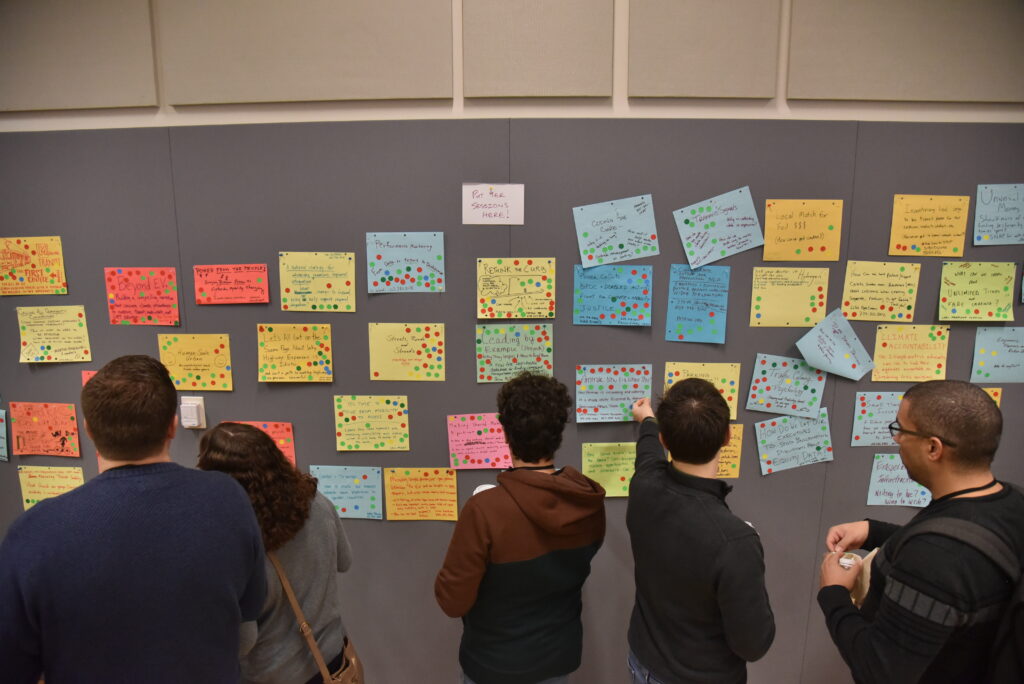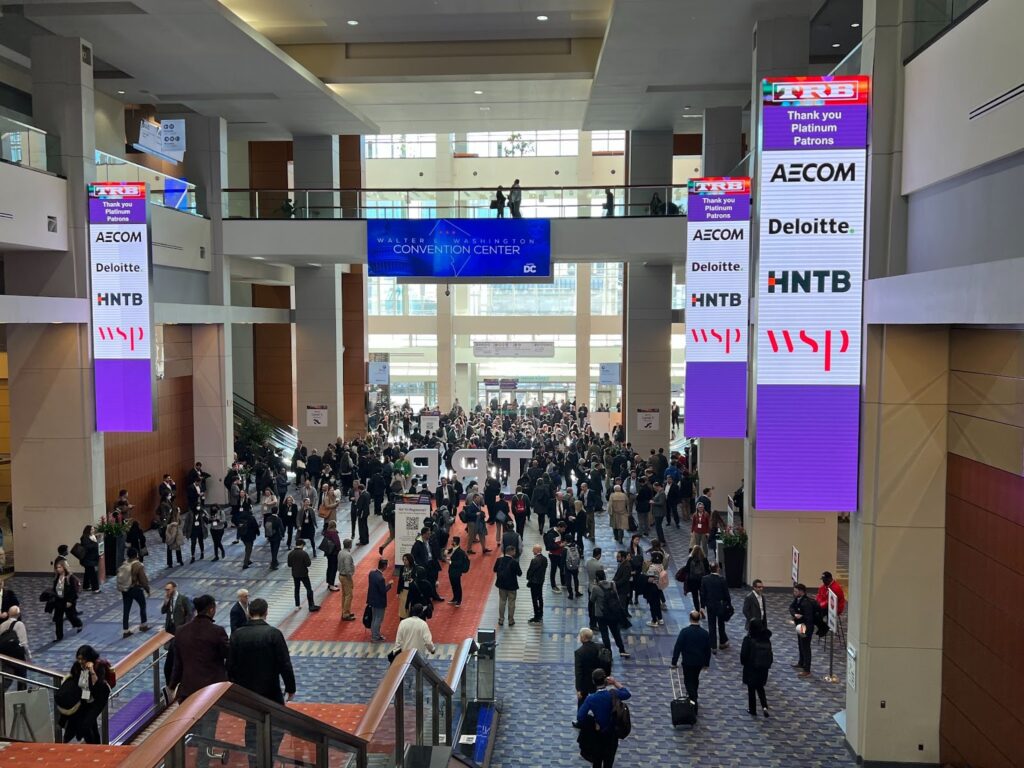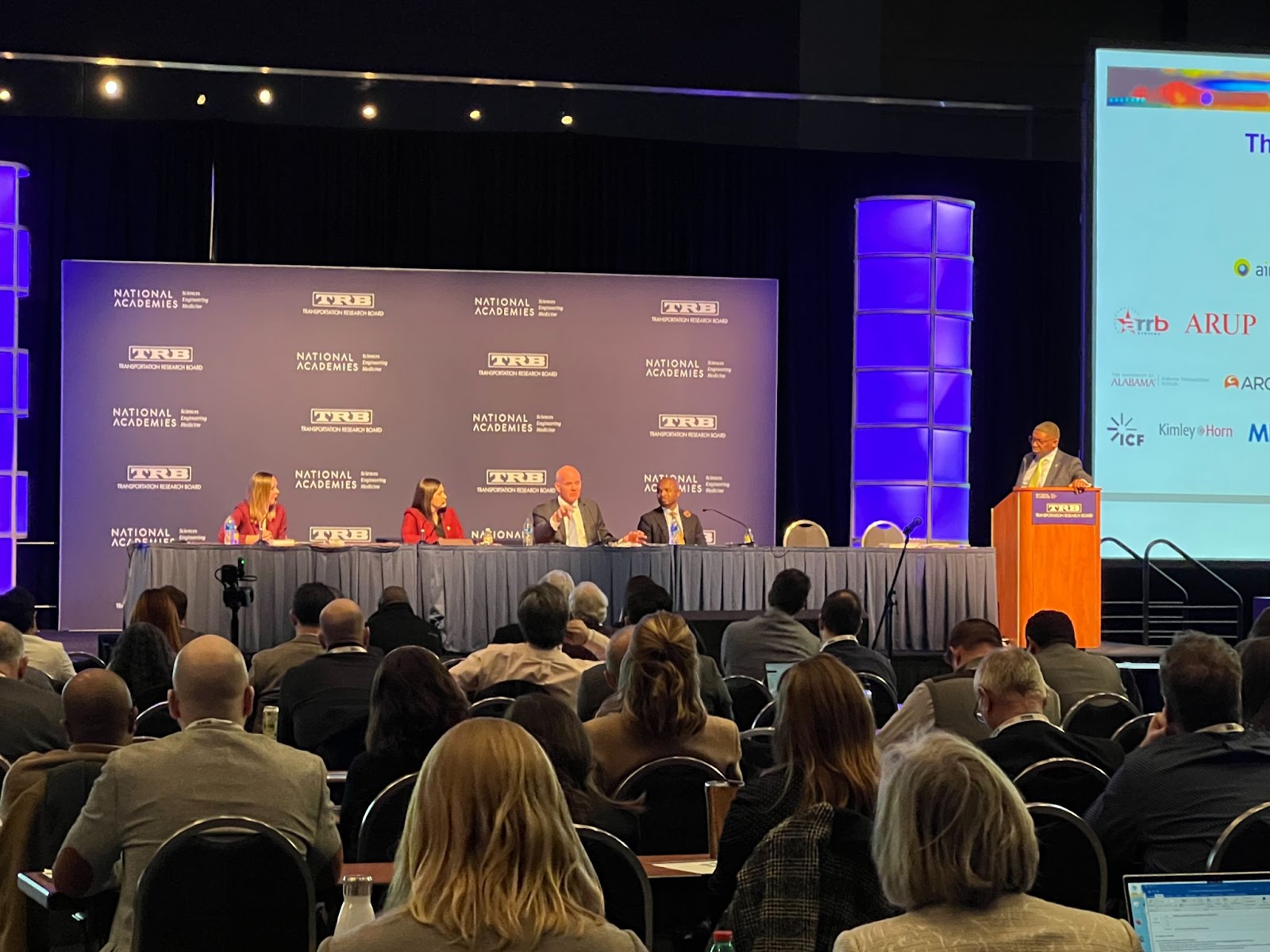
TRB: Transportation’s Really Broken

The Transportation Research Board’s Annual Meeting was held earlier this January in Washington, D.C. Despite claiming to be at the forefront of innovation, most of the conference avoided the truth: any system based primarily on moving cars as quickly as possible will leave many people behind.

Earlier this month, I attended portions of the Transportation Research Board’s (TRB) Annual Meeting in Washington, D.C. Across all the conversations, committee sessions, and social events, there was significant discussion of using technologies like modeling, automated vehicles, and intelligent transportation systems to solve the most pressing problems in transportation. The overriding ethos of many panels was that through technological innovation and computational analysis, we could address the increasing congestion, worsening traffic safety, and drop in transit ridership that all persist as we get farther from the darkest days of the COVID-19 pandemic.
This is how much of the transportation ecosystem—from engineers and planners to many private companies and public policymakers—has disconnected innovation from progress. Although many of the new technologies presented in and around D.C.’s convention center may be considered “advancements” by those who worked on them, they do not meaningfully advance one simple goal: to move people and goods where they need to go as quickly, efficiently, and safely as possible, with a variety of mobility options.
The many innovations discussed at TRB seemed far better ways to avoid confronting the truth—that a system that requires 90 percent of the population to own a private vehicle will never be an efficient system—than serious attempts to ensure our transportation system works better for all.
This did not apply to all of the conference’s participants. Students like Evan Taylor presented posters looking not just at vehicular traffic, but bicycle and pedestrian traffic as well. Organizations like the Parking Reform Network hosted happy hours where they discussed local efforts to improve affordability and efficiency through tweeks to transportation policy. I personally was able to have a great conversation with two planners from Montréal’s commuter railroad, one of whom was presenting on on-demand transit efforts they were undertaking. Perhaps most importantly, even federal government officials didn’t kowtow to automobile autocracy. In the conference’s keynote, panel on roadway safety, and the release of a national transportation decarbonization blueprint by DOT, HUD, EPA, and the Department of Energy, prioritizing cars above all else was described as the obstacle to addressing crises of safety and sustainability.

Part of the reason these points of view are exceptions to the rule are policy choices, many of which administration officials have limited wiggle room in implementing. The Infrastructure Investment and Jobs Act did increase funding for passenger rail and complete streets to historic levels. But at the same time, it allocated hundreds of millions of dollars to worsen the same sprawl, pollution, and safety problems that rail and active transportation investments are supposed to fix.
Policy isn’t created in a vacuum, though. If there’s any field where that’s true, it’s transportation, where a century of greed-oriented campaigning by the automobile industry and its allies has pushed protecting pedestrians from cars to the background. It has pushed transportation as a field to treat congestion writ large as an enemy, even though many industry professionals experienced the opposite at TRB. Congestion may not be pleasant coming home from the grocery store in a car, but in person it allows for the mingling in bars, impromptu run-ins in hallways and on street corners, and memorable nights at restaurants that give conferences, and cities more broadly, their value. In short, congestion can be a sign of inefficiency, but also of community. Whether it’s a crowded conference or a busy street, congestion can be a clear sign that we’ve created places where people want to be.
TRB and many of its participants have gotten used to instinctively adding vehicle capacity onto every individual problem the transportation system has—and destroying countless communities in the process—instead of asking what tools can move more people, more safely without simultaneously decimating destinations where they gather.
That also means that this status quo isn’t predetermined. During a TransportationCamp session on fighting freeway expansions, one employee at a west coast transportation consultancy described how there are efforts at their firm to make reconnecting communities projects an established team in their organization. The Complete Streets policy passed by Howard County, Maryland, in 2019—which will be reviewed in Smart Growth America’s upcoming Best Complete Streets Policy Report—explicitly described slowing down car traffic as a net positive for the community at large.
At Transportation for America, our three principles are based on the idea that we already have all the tools we need to make sure our transportation system doesn’t divide communities, heat our planet, and kill our friends, family, and neighbors. We don’t need new technology, we don’t need to reinvent the wheel, we just need the will to better use the tools we have.



